Beyond ROI: When Your Rental Property’s ROE Signals It’s Time to Sell
As Realtors focusing on investment properties, we often hear investors discuss Return on Investment (ROI) when evaluating their rental properties. While ROI is a foundational metric, focusing solely on it can lead to missed opportunities. The smarter, long-term investor also pays close attention to Return on Equity (ROE). Understanding the distinction between these two metrics can be the key to knowing exactly when to strategically sell a rental property and maximize your overall portfolio’s performance.
This article will break down ROI and ROE, highlight their differences, and demonstrate why a declining ROE might be your clearest signal to consider selling.
ROI: The Initial Benchmark (Return on Investment)
ROI is a straightforward measure of the profitability of an investment relative to its initial cost. It tells you how much money you’ve made back on your initial outlay.
Formula:

ROI Formula for real estate investments
Example:
Let’s say you bought a rental property for $200,000. Your initial investment (down payment, closing costs, minor renovations) was $50,000. The property generates an annual net profit (rental income minus all expenses like mortgage, taxes, insurance, maintenance, vacancies) of $10,000.

ROI example showing $10,000 profit over a $50,000 initial investment
A 20% ROI sounds fantastic, right? And it is, for the initial investment. ROI is excellent for comparing the initial performance of different investment opportunities.
ROE: The Evolving Picture (Return on Equity)
While ROI remains constant based on your initial investment, ROE takes into account the current equity you have in the property. Your equity grows over time through mortgage principal paydown and property appreciation. ROE answers the question: “How effectively is the capital currently tied up in this asset working for me?”
Formula:

Simple formula to calculate ROE on investment properties
Where Current Equity = Property’s Current Market Value – Outstanding Mortgage Balance
Example (Continuing from above):
Five years later, your property has appreciated to $280,000, and your mortgage balance has reduced to $130,000. Your current equity is now $280,000 – $130,000 = $150,000. Let’s assume your annual net profit is still $10,000 (rents may have increased, but so have expenses, keeping the net profit similar for simplicity).

Example of ROE being calculated
The Critical Difference: Why ROE Matters More Over Time
Notice the stark difference in the percentages: your ROI is still a healthy 20%, but your ROE has dropped to 6.67%. Why is this significant?
–Trapped Capital: As your equity grows, more of your capital becomes “trapped” in the property. A low ROE indicates that this substantial amount of equity isn’t generating a strong return compared to its potential.
–Opportunity Cost: That $150,000 in equity could potentially be reinvested into a new property, or even multiple properties, that offer a much higher initial ROI and thus a better ROE on the new capital invested.
–Declining Efficiency: A declining ROE signals that the property, while still profitable, is becoming less efficient at generating income relative to the value it holds.
Visualizing the Shift: ROI vs. ROE Over Time

Summary of ROE versus ROI on year 1 versus year 5
As you can see in the chart, your ROI remains consistently high, but your ROE tells a different story. This is the crucial point for real estate investors.
When to Consider Selling Based on ROE
There’s no magic ROE percentage that dictates a sale, as it depends on your individual investment goals and market conditions. However, here are some triggers:
Declining ROE Below Target: If your ROE falls below a predetermined acceptable threshold (e.g., below 7-8%, or below what you could achieve in a low-risk alternative investment like a savings account), it’s time to analyze.
Better Investment Opportunities: If you identify new properties or other investment vehicles that offer a significantly higher ROE for the same amount of capital, it could be a strategic move to sell and redeploy your equity.
Market Peak: In a strong seller’s market with high appreciation, your equity will grow rapidly, potentially driving down your ROE. This could be an opportune time to sell, realize your gains, and avoid having too much capital tied up in a single, lower-performing asset.
Portfolio Rebalancing: Selling a property with a low ROE allows you to free up capital to acquire assets that better align with your current investment strategy, whether that’s higher cash flow, greater appreciation potential, or diversification.
Cash Out/HELOC Options: Tapping into some of that trapped equity to purchase other investments or make value add improvements to properties can also grow net worth, increase ROI, increase rent and rebalance lower ROEs like the Buy, Rehab, Rent, Refinance, Repeat (BRRRR) strategy.
Conclusion
While ROI is a great starting point for evaluating a rental property, seasoned investors know that Return on Equity (ROE) provides a more dynamic and actionable picture of an investment’s true performance over time. By regularly assessing your ROE, you can identify when a property is no longer working as hard as it could be, empowering you to make informed decisions about when to sell and strategically reallocate your capital for superior returns. Don’t let your equity become “lazy” – understand your ROE and let it guide your selling decisions.
Another great article by Graystone Investing Group can be found HERE.
If you need help or have any questions, please call or email me at 701-471-9506 or billdean@alliancere.net.
Thanks for reading,
Bill Dean

 Facebook
Facebook
 X
X
 Pinterest
Pinterest
 Copy Link
Copy Link







